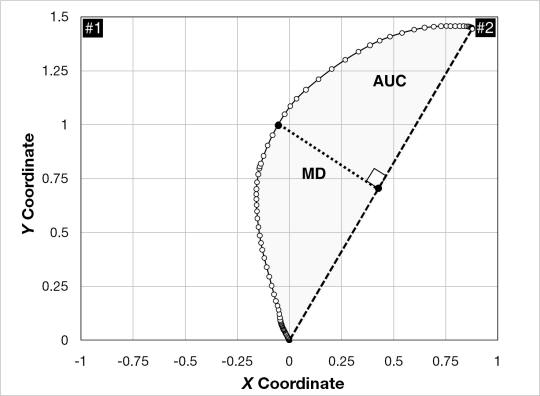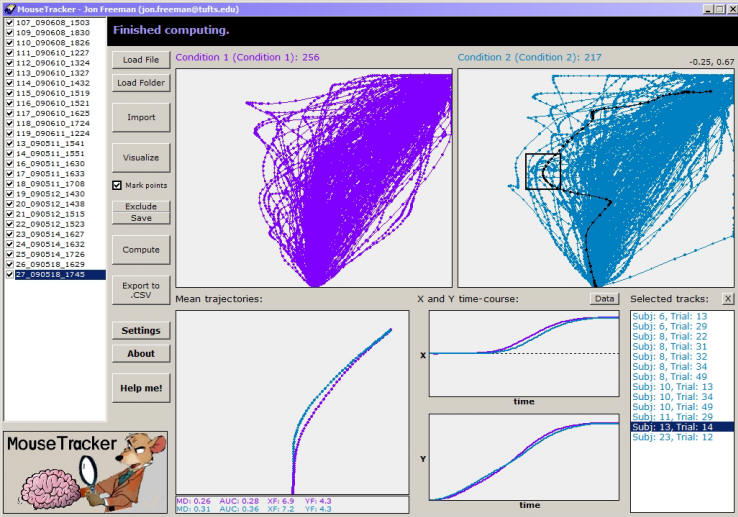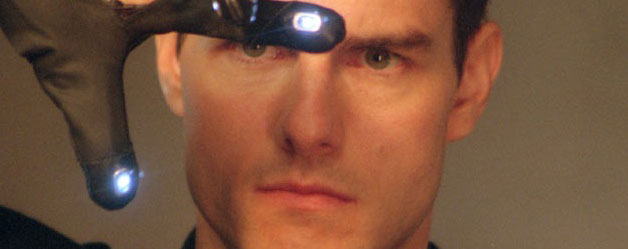Traditionally, lie-detection has been a process of cause-and-effect. A question is asked, the person replies, and his mental parameters are noted and ascerted to be true, or false. But not much work has been done in trying to understand the processes that happen during the time the person listens to the question and processes it in his mind.
A previous study has revealed [Duran et.al (2010)] that there is in-fact a very distinctive relation in the hand-movements chosen to tell a truth and a lie. This study was done using a Nintendo Wiimote and sophisticated tracking methods. However, this project proposes using mouse-movements as an effective and economic solution. Mouse movements have been used earlier to gauge the typicality of certain images [Dale et.al(2007)] and to verify the continuous nature of language processing in our minds [Farmer (2007)].
A simple response-time curve is not enough for predicting the truth-lie behaviour. Neither is an accumulated response sheet of the responses coupled with comparison from a calibrated response of an EEG monitor - as the participants/interrogatees might show unnecessary tension and nervousness traits due to discomfort from the devices and sensors attached to the body. A mouse-movement experiment provides high-fidelity experimental data which captures the thought process in-terms of the mouse-path and is very easily acquirable owing to the ease of operation of the mouse amongst the general public.
The core task is simple - to make a person read and/or listen to a yes/no question, and ask the person to answer it either truthfully, or lie about it. So this makes 4 possible nature of answers:
- True/Yes
- False/Yes
- True/No
- False/No

The participant will be asked to move the mouse pointer towards the answer as soon he/she starts hearing/reading the question. This is because language is evaluated continuously as we keep on assimilating it and the response of the participant will be dependant on the portion of the question heard, and the what the participant predicts it to be. The questions asked in this process will be very obvious and rudimentary and will have very easily verifiable factual answers such as:
- "It is night currently"
- "You are wearing a blue shirt"
- "You have 6 fingers"
- and so on...
-
However, mixed in between will also be questions to which an obvious/factual answer is not possible to ascertain and our knowledge for that question depends only on what the person tells us. It is hoped that such questions can be used to to add a slight uncertainty to the machine-learning database and and also to try and deduce some patterns which might be indicative of double-crossing thoughts (e.g. Falsifying, despite being told to answer truthfully).

As found out by Dale, there is a very distinct difference in the patterns of all four choice options. e.g. The True/Yes option has the most direct path taken froom the source to the correct choice. While the False/Yes shows the highest deviation/competition between the two choices.

Based on a large number of responses during the experiments, one can generate normalised curves for responses. And then when you want to interrogate a person you just need to follow the following strategy:
- Ask the person a collection of obvious questions with factual answers. Since they are obvious ones - the natural tendency to answer them truthfully will come about and you will be able to obtain responses.
- Based on these responses, develop a response curve for the particular person
- Calibrate the experiment by comparing the person's response curve and the previously obtained normalised curve
- Analyse each response for deviations from the normalised curves and ascertain whether the person has answered a True/Yes, False/Yes, True/No, or False/No.
- The data obtained can be used to validate the results obtained by Dale using Nintendo Wii-mote and the differences in results can be analysed and checked for inconsistencies. A comparison on the quality of the data can also be done for both cases if possible.
- Farmer found out that the responses are affected continuously as the user reads, listens, understands and evaluates the statement to which he has to respond. This proves a continuity model of language cognition.
There isn't much specialized hardware/software required for this experiment. The following list looks sufficient for the moment unless some other unforseen complications arise.
- Basic Computer with Optical Mouse
- MouseTracker software (available for Free on Dr. J. B. Freeman's Website)
- A sizable bundle of questions (obvious ones, not so obvious ones, and personal ones)
- A sizable number of participants with uniformly distributed variety in terms of age, sex, geographical origin
- Freeman, J. B., R. Dale, et al. (2011).
"Hand in motion reveals mind in motion."
Frontiers in Psychology: 2 - Duran N. D., R. Dale, McNamara D. S. (2010).
"The action dynamics of overcoming the truth"
Psychonomic Bulletin & Review - McKinstry, C., R. Dale, et al. (2008).
"Action dynamics reveal parallel competition in decision making."
Psychological Science 19(1): 22 - Dale, R., Kehoe, C., & Spivey, M. J. (2007).
"Graded motor responses in the time course of categorizing atypical exemplars"
Memory & Cognition, 35, 15-28. - Farmer, T. A., S. A. Cargill, et al. (2007).
"Tracking the continuity of language comprehension: Computer mouse trajectories suggest parallel syntactic processing."
Cognitive science 31(5): 889-909 - Dale, R., J. Roche, et al. (2008).
"Exploring action dynamics as an index of paired-associate learning."
PLoS One 3(3): e1728
